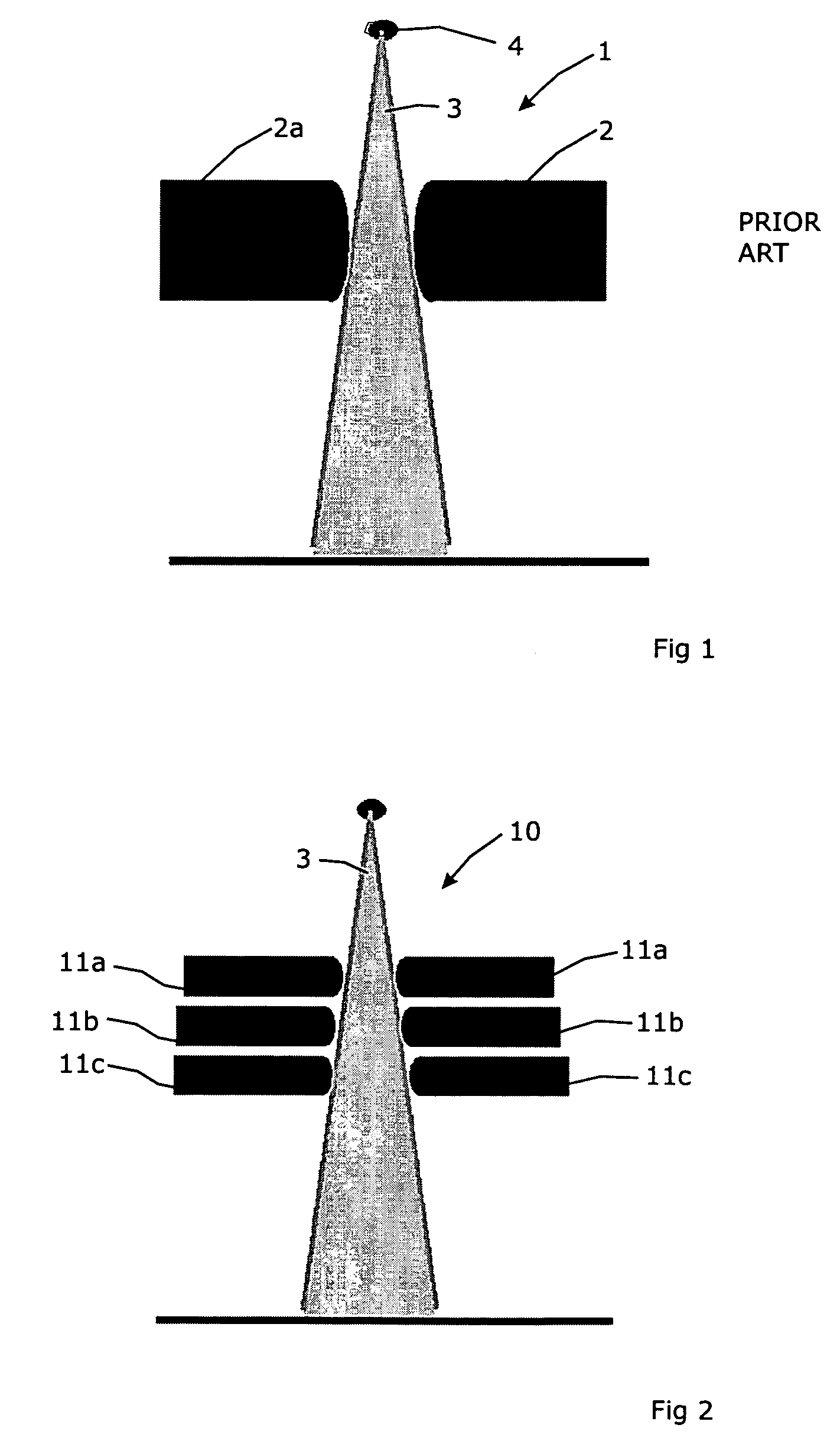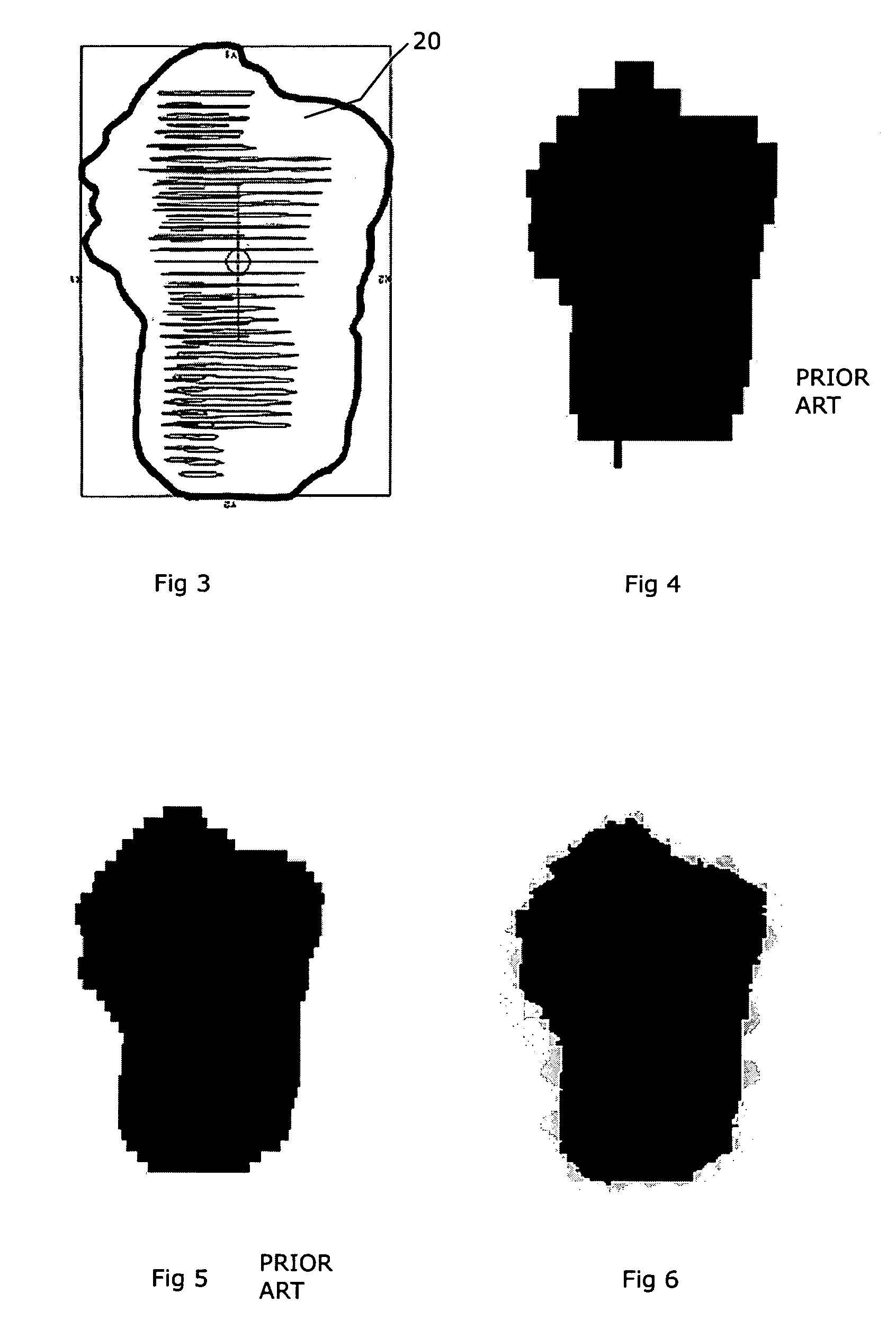Multi-leaf collimator
a collimator and multi-leaf technology, applied in the field of multi-leaf collimators, can solve the problems of increased likelihood of recurrence, longer recovery time after treatment, and increased side effects, and achieve the effect of improving resolution and large field siz
- Summary
- Abstract
- Description
- Claims
- Application Information
AI Technical Summary
Benefits of technology
Problems solved by technology
Method used
Image
Examples
Embodiment Construction
[0031]FIG. 1 shows the relevant part of a beam collimator 1 of conventional design. The collimator 1 comprises a set of a pair of multi-leaf banks 2, 2a disposed in a plane orthogonal to the direction of the X-ray or other beam 3 exiting from the aperture 4.
[0032]FIG. 2 shows the collimator 10 according to the present invention, in a corresponding vertical plane (i.e. in the direction of the beam 3) to FIG. 1 of the conventional type of collimator. The collimator comprises three multi-leaf sets, 11a, 11b and 11c, each set comprising a multi-leaf bank disposed on either side of the X-ray beam 3, and each disposed in a row in the vertical section. What is not visible in FIG. 2 is that the three banks are arranged in different orientations, such as with their leaf direction at 60° to each other.
[0033]FIG. 10 shows a top view of the multi-leaf collimator 10 of FIG. 2, wherein FIG. 10 illustrates an example of acute angles of 60 degrees between leaf directions of the sets 11a, 11b and be...
PUM
 Login to View More
Login to View More Abstract
Description
Claims
Application Information
 Login to View More
Login to View More - R&D
- Intellectual Property
- Life Sciences
- Materials
- Tech Scout
- Unparalleled Data Quality
- Higher Quality Content
- 60% Fewer Hallucinations
Browse by: Latest US Patents, China's latest patents, Technical Efficacy Thesaurus, Application Domain, Technology Topic, Popular Technical Reports.
© 2025 PatSnap. All rights reserved.Legal|Privacy policy|Modern Slavery Act Transparency Statement|Sitemap|About US| Contact US: help@patsnap.com



